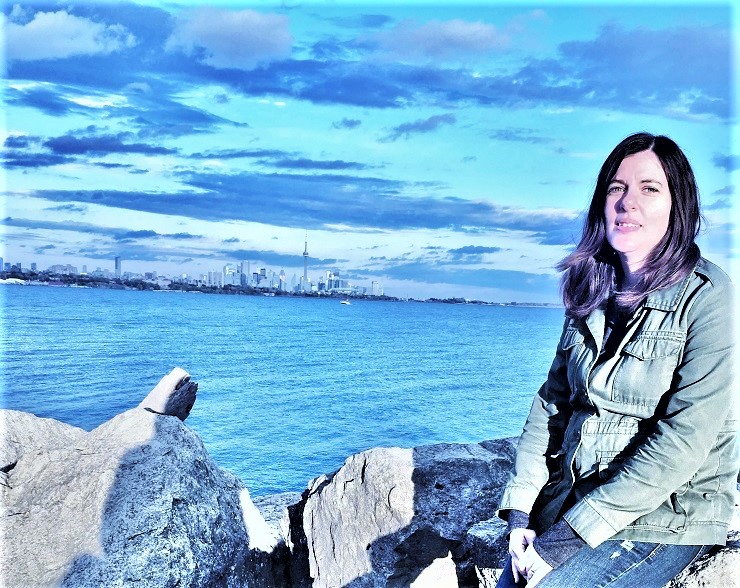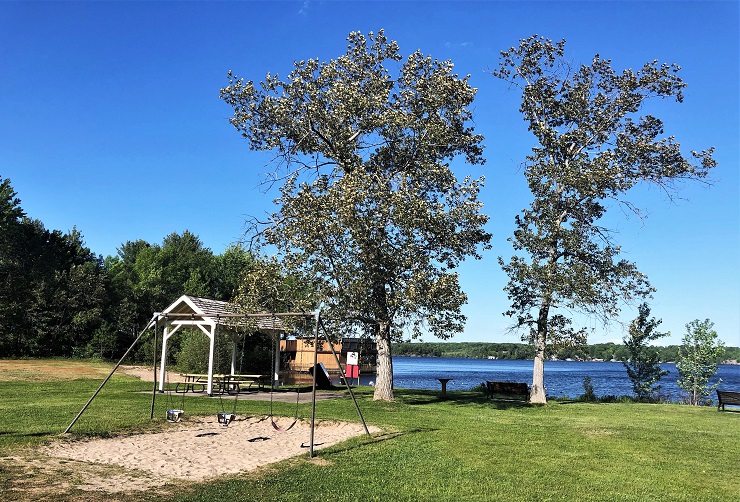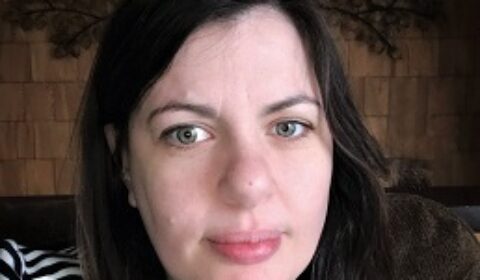CAN’T WAIT TO ESCAPE ‘CITY’ AFTER PANDEMIC, TO GET BACK ‘UP NORTH’
My family isn’t local to Muskoka, we moved to the area in 1979.
I always thought I was from “The City.” But that isn’t technically true, we moved to Gravenhurst from Scarborough.
I went to York University — and that isn’t really in Toronto, either. It’s part of North York.
Living on my own for the first time at school, I probably wouldn’t have ventured far past campus if not for my brother who lived in the city.
In high school I would take the Ontario Northland bus to visit him, and I learned how to navigate the subway system travelling first to an area of Etobicoke, near a Campbell Soup Factory. And later to Bloor West Village.
I experienced different parts of the city, separate from school field trips, Blue Jay games at the Sky Dome and shopping at the Eaton Centre or Yorkdale.
Following in my big brother’s footsteps, I became the second of my siblings to call Toronto home.
Now, I board the same bus from Toronto to visit Muskoka, as I have for more than 20 years.
I go “up North” many times a year, for Thanksgiving, family birthdays and for Christmas and summer holidays.
I used to, anyway. Before the pandemic.

I haven’t been to Gravenhurst since February 2020 — and I have no plans to until I’m fully vaccinated. I don’t want to get anyone sick or put any strain on Muskoka resources.
I’ve never spent so much time in the city before.
And Toronto when in lockdown is much different than regular Toronto. Many things are still closed.
And while people are good about wearing masks and socially distancing, they are everywhere, especially in nice weather. Moreso since Friday’s reopening.
When I was younger, I sought out the action-packed bustle and was drawn to the King Street club district.
Now I seek out the peace and quiet, and it’s surprisingly easy to find.
Toronto is nicknamed the “Big Smoke,” but it’s also known as the “City Within a Park.”
I saw a bear in Muskoka once, but believe it or not, I saw my first deer in Toronto — on the Lower Don River Trail.
Growing up, I lived within walking distance of Muskoka Bay Park, but I took the beach and tennis courts for granted. And the Wharf wasn’t like it is now, the old towers hadn’t been torn down yet. I appreciate how much the Wharf has transformed the area.

Now I crave Toronto spots as relaxing as West Gravenhurst. They remind me of the peace of my mom’s yard, the air filled with the fragrance of lilacs, and the calls of songbirds.
In the city I’ve found the hiking trails and walking paths, the botanical gardens, waterfronts, parks and beaches and the quieter pockets.
Every summer my husband and I take the ferry to Toronto Island and walk from the pier to the sand dunes to the Gibraltar Point Light House.
One negative about city living? The dream of home ownership will never come true here, unless we want to live in a concrete box in a glass tower, or become extremely wealthy. The duplexes on my street sell for upwards of a million dollars.
Even if I consign myself to the fate of renting forever, there is always the possibility of being priced out of my neighbourhood. The affordable housing crisis is causing such a ripple, even moving out of the city, doesn’t guarantee the possibility of homeownership, and rents are skyrocketing.
I love my walk-able neighbourhood and would love to live here forever. There are shops, restaurants and a mall, all on the subway line. High Park and Lake Ontario are close by.
One thing that drew me to the area is its quiet tree-lined streets, full of Instagram-ready yards bursting with gardens and flowering trees, and an eclectic architectural mix of character homes.
I don’t often spend much time in the city in the summer, but being stuck here, I’ve learned to love my neighbourhood more.
I’ve discovered there is community here, not something usually identified as part of city living.
We have our own “beach” — albeit a land-locked one with no water.
Bloordale Beach is located on the lot of a former school, and the Toronto District School Board, sold the land to a developer who has fenced off the property and left it vacant.
The fence cuts off a popular shortcut to the Dufferin Mall, and the developer’s inability to listen to the needs of the community was one of the inspirations for the beach, according to my neighbour who was one of its founders and filled me in on its history on a recent front porch chat.
The beach serves many purposes. It’s important to have access to public space, especially during a pandemic, and it has become an outdoor gathering spot.
Its collection of handmade signs — including a repurposed ‘No trespassing’ sign now read: ‘Linger – So Yes Passing,’ a turtle nesting area, and a new community garden — have transformed it from a local attraction to a city-wide destination.
It’s even ranked the No. 9 beach in Toronto on TripAdvisor.ca.
However, eventually our beach will be shut down, when the lot it occupies is developed.
An Italian restaurant is another neighbourhood hotspot, and when it first opened there were hour-long lines to be seated.
Unfortunately, the neighbourhood you love can transform, and become unrecognizable over time. Popularity and overdevelopment cause many threats.
Many areas in Bloordale Village are slated for redevelopment, which puts a strain on infrastructure and causes problems from never-ending construction to traffic jams.
The changes can also signal the ruin of an area’s unique character as higher prices force long-time residents to move. And local businesses are forced to relocate or shutdown.
Entertainment venues, churches, and single-family homes aren’t exempt from the danger of being demolished for condo towers, and construction cranes are as ubiquitous as the nuisance raccoons nicknamed “trash pandas.”
Another city drawback is the lack of a Giant Tiger. I miss GT, seriously! Fun fact, there is not a single, solitary Arby’s in Toronto.
All joking aside (even though I’m serious, and keep begging people to go to Arby’s with me when we’re anywhere near Orillia), I miss my family, terribly.
Thank goodness for modern technology and cellphones. Hearing someone’s voice is one thing, but seeing their face is a necessity, and not just during a pandemic.
Now when I visit Muskoka, I feel like a tourist. I want to take pictures of everything. I miss casual visits, the ability to pop in for a quick tea, or having a chat in the aisles of the grocery store.
My mom once told me she never goes to the Gravenhurst Farmer’s Market unless I bug her to go. She thinks it’s more for cottagers.
The divide between locals and cottagers has always been kind of a thing — and I’m neither.
Of course, many year-round and summer residents are lifelong friends, and it’s not fair to judge all cottagers from the few cranky ones.
But the crankiness in places like the grocery store is off the charts.
For a few summers I was a cashier at YIGs and heard of first-hand remarks like: “I wish locals would shop during the week.”
There was also the ‘Rhubarb Incident.’ We sold rhubarb by the bunch, not by weight, and a lady wanted only one stalk, and I refused to let her have one for free. When she was out of earshot, the next customer gave me props for not backing down, and remarked that the woman must not have been from around here or she would have a patch to raid. Who has to pay for rhubarb?
When I recently visited my family’s old neighbourhood in Scarborough, I found quiet residential streets near the Bluffs, the scenic cliffs that overlook the shore of Lake Ontario. The house we lived in was torn down though, and replaced with a million-dollar new build.
We all seek to put down roots, and to find a permanent home.
For now, I’m going to keep enjoying the best of both worlds.

June 13, 2021 @ 7:30 pm
Hey guys, Tara Collum is a keeper, but you need to put her name in the byline. Should I renew early to help keep her on board?
June 14, 2021 @ 9:07 am
TODAY’S story by Tara Collum re “the best of both worlds” was a well-written, intelligent examination of the changes wrought by pandemic life. I loved her approach to exploring her new world in the city — it brought back memories of having to live in Toronto for a brief time many years ago and doing the same thing — trying to find everything possible to see and do for free in a new and very different world. I also loved the fact that she has had such a care-filled attitude towards bringing COVID here to Gravenhurst. I look forward to reading more of her “columns” in your newspaper Mark.